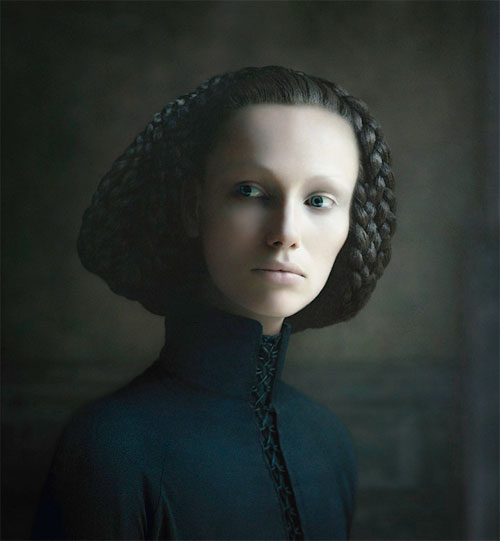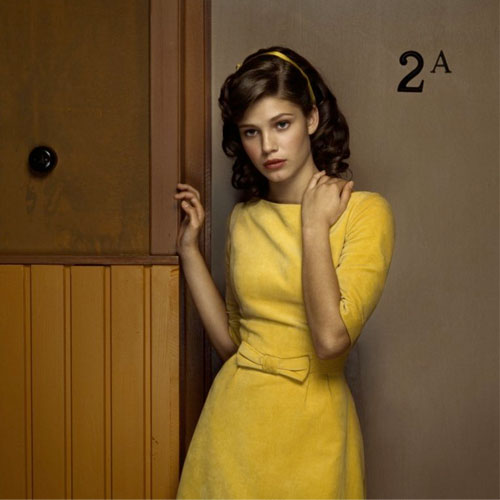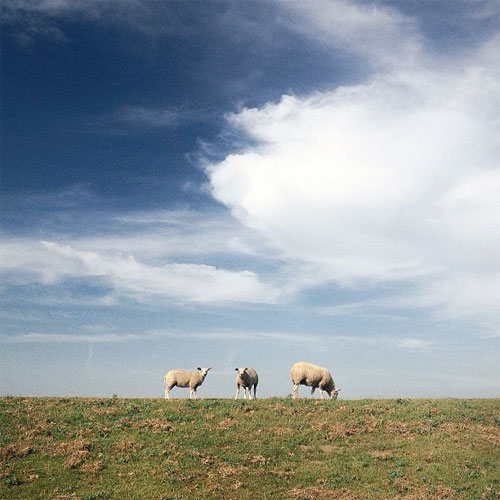Dutch photography is no doubt influenced by Dutch painters, especially those who marked a turning point in the history of Art. For example, the influence of Johannes Vermeer (1632-1675), the master of lighting, is indisputable in many photography portraits that use chiaroscuro. But if Dutch photography has roots in the past, it is particularly dynamic and diverse. In this Top 10 we decided to show you major artists as well as new talents in no specific order.
Desiree Dolron
Desiree Dolron was born in 1963, Netherlands. She has travelled around the world. Whatever corner of the world she finds herself in, she has invariably returned with uniquely personal records of her journeys. Dolron's acute vision meshes traditional reportage photography and computer enhancement to create a richer version of a genre that many believe to be tired and overused. The stillness and subtlety that is evoked by her seamless work has created a 21st century vision at odds with traditional photographic practice. Her references are obvious, but the outcomes are a revelation.
Erwin Olaf
Erwin Olaf Springveld is a Dutch photographer. Olaf is most famous for his commercial and personal work. He has been commissioned to photograph advertising campaigns for large international companies such as Levi's, Microsoft and Nokia. Some of his most famous photographic series include "Grief", "Rain", and "Royal Blood". Never one to shy away from controversy, Olaf's work is often daring and provocative. Humorously however, one of his early photographs was once expelled from a show on the basis of not containing nudity. His work has received many awards and he has held exhibitions around the world.
Hendrik Kerstens
In 1995, Hendrik Kerstens (born 1956) picked up his camera to document the fleeting moments he shared with his young daughter, Paula-her sunburns, her baths-and began what would become a dedicated career in photography. As Paula grew older, Kerstens was struck by how much she resembled subjects of 17th century Dutch portraiture. He began photographing her always referring to the seventeenth century painting, but with every day items.
Rineke Dijkstra
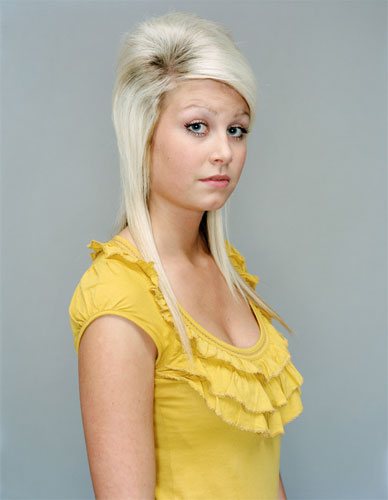


Dutch photographer and video artist. She studied at the Gerrit Rietveld Academie in Amsterdam between 1981 and 1986. She worked as a formal portrait photographer until the early 1990s when she began to take her own style of portraits. The Beaches series (1992-6), for which she photographed adolescents in their bathing costumes on beaches from the Ukraine to the USA gained her international attention. Dijkstra mostly works in series of portraits, capturing her subjects in moments that are both selfconscious and unwittingly revealing. In Julie, February 29, 1994, a mother clutches her newborn baby to her bosom in front of the white walls of a hospital. In 1997 Dijkstra made a series of one-minute videos taken in two night clubs. After selecting her models from the clubbers, Dijkstra let them perform as they wanted in front of the camera, as in The Buzz Club, Liverpool, England, March 1, 1997 (see 1997 London exh. cat.). Dijkstra's portraits differ from those shot by other documentary photographers such as Wolfgang Tillmanns during the 1990s, both in her use of obviously posed compositions and in the distance that she creates between herself and her models in their often startled, confrontational expressions. Presenting a variety of models ranging from matadors to shop assistants, Dijkstra draws not only on the history of documentary portrait photography represented by August Sander and others, but also on the history of portrait painting as well as on each model's desire to present his or her own imagined image.
Claire Droppert
Claire Droppert is a freelance photographer/graphic designer based in Rotterdam. After her study Graphic Design in Rotterdam, she worked at several advertising agencies and has developed her skills as a photographer along with her graphic design abilities. In her work, Claire is inspired by the line where simplicity and minimalism are wed, and the new editing techniques that can blur this line. She has a strong preference for landscapes, and desolate/open spaces. There is a distinctive whispering silence to be found in Claire's work.
Barbara De Vries
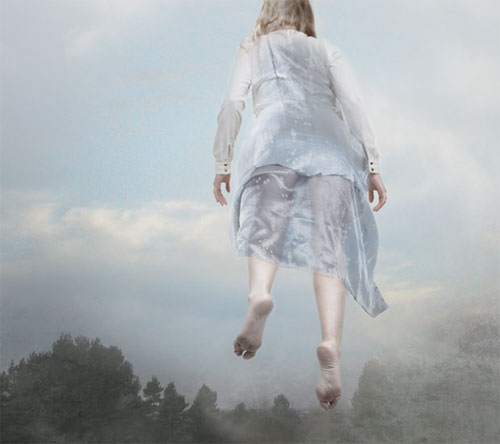


The Dutch artist Barbara de Vries studied at the Rietveldacademie and the St. Joostacademie graphic art, industrial design and theater design. Although she worked with several famous theatres, Barbara finally got specialised in photography. The atmosphere in her work is a midway between fantasy and reality. Her images are mostly blurred, out of focus, with glimpses of reality. The Dutch curator Maarten Bertheux wrote as follow about her work. 'Work of Francis Bacon and Marlene Dumas are relevant for the work of Barbara de Vries. Her work contain of digital reworked photographic material printed on Japanese paper. She combines and deforms her images in order to create her layered images. When she uses soft contours it brings in mind an aquarellist way of painting, a style De Vries used frequently before she started to use the computer as a tool in her photographic work. Her background as a stage designer has also influenced her actual work. This experience appears in the theatrical and dramatic setting and in the way she manipulates the light. In the photographic work there can be clear definition of space, but equally she uses an indistinct space that can vary from a sfumato-like space to a space where figures seem to float in. The figures are constructed out of several limbs and elements that are reconstructed in a new way, creating a new figuration. It seems as it is De Vries' capability to creep under the skin of her model and analyzing the basic psycho logic characteristics'. Barbara de Vries' photography evoke feelings of hope, desire and consolation.
Vivian Sassen
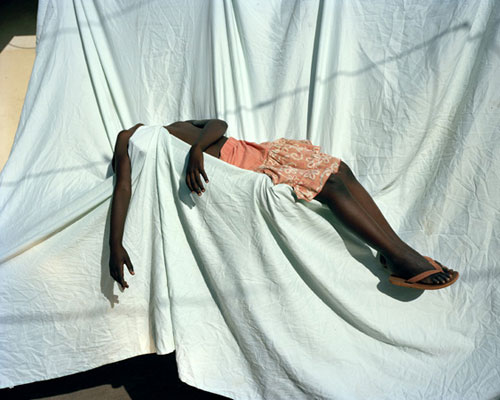


Viviane Sassen was born in 1972 in Amsterdam, and lives and works there. She first studied fashion design followed by photography at Hogeschool voor Kunsten Utrecht and fine art at Ateliers Arnhem. Sassen grew up in East Africa and has been taking photographs on the continent since her first return visit in 2002. Selected solo exhibitions have taken place at Forma in Milan (2009) and Foam in Amsterdam (2008). Sassen was one of six artists selected for the annual New Photography exhibition at the Museum of Modern Art, New York, in 2011. Recent group exhibitions include The Encyclopedic Palace at the 55th Venice Biennale (2013); No Fashion, Please! Photography between Gender and Lifestyle at the Vienna Kunsthalle (2011); Figure and Ground: Dynamic Landscape at the Museum of Contemporary Canadian Art in Toronto as part of the Contact Photography Festival (2011); and Six Yards: Guaranteed Dutch Design at the Museum voor Moderne Kunst Arnhem (2012). In 2007 Sassen received the first prize of the Prix de Rome, and in 2011 she won the International Center of Photography Infinity Award for Applied/Fashion/Advertising Photography.
Mariska Karto
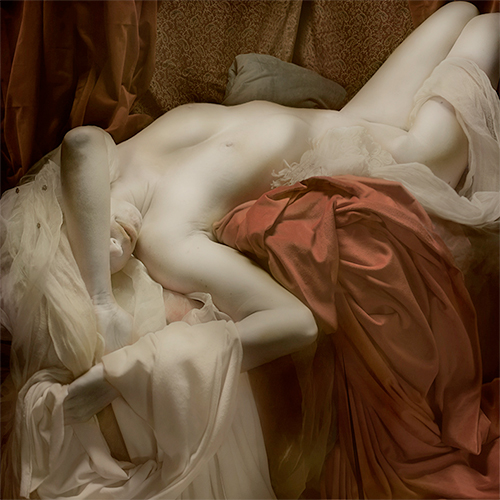


Mariska Karto is an artist/ fine art-photographer born in Suriname (South-America) and raised in the Netherlands.
In this age of rapidity and technical development, in which human is exposed to impersonal detachment of current technical era, Mariska Karto creates the vulnerable and intensive dimensions of human feelings and emotions. This all happens in the dreamworld she has created with her technique in which past and present have found their way to each other, in this era of transformation. She talks to you in a language without words using symbolism in a dreamworld of historic paintings atmosphere. Mystique, tragic and erotic are the keywords for her work. Her work are like old stories escaped from an old world of eternal dreams, eternal emotions and eternal feelings that existed for hundred of years but still repeats themselves as in a pattern of an earthy rite, in this new modern contemporary era. Her works are like poems and thoughts, restless ones but are also like whispers of thoughtless experiences, floating in a centuries long movement in time.
Anton Corbijn
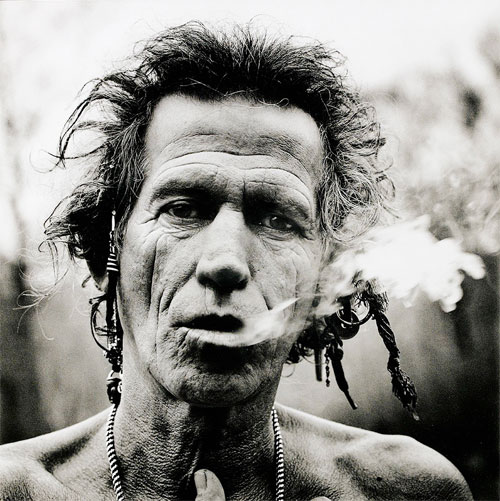


Anton Corbijn (b. Strijen, 1955) has had a major influence on international music and portrait photography. The creative, off-beat way he has photographed performing artists since the 1970s has become his personal trademark. His striking portraits strip away the mask, often at lightning speed, to reveal another aspect of the subject's personality. Or, indeed, they impose literal masks, as in the case of the Rolling Stones, U2 and Arcade Fire, to lend the subjects an almost mythic aura. Even without masks, however, Corbijn's photographs always have an air of mystery. Time and again, he endows his work with an extra layer of complexity by the way he depicts the subject and through the use of an array of photographic techniques. The physical setting also plays an important part in his work. Most of his photographs are taken outside the studio and are loosely staged. Corbijn regards himself as a cross between a traditional portrait photographer and a documentary photographer out to record people in their own physical surroundings and social circumstances.
